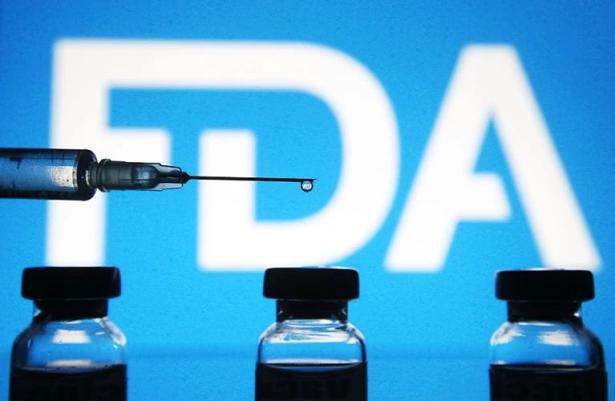The US Food and Drug Administration (FDA) will soon require researchers and companies seeking approval for late-stage clinical trials to submit a plan for ensuring diversity among trial participants.
Many scientists have applauded the move, which was laid out in a spending bill signed into law by US President Joe Biden in December 2022. They say that broadening participant pools is important to make medicines more effective across the whole population. But they are not yet convinced that the FDA will adequately enforce the new requirement.
Nonetheless, “this is the biggest change in the regulatory landscape for clinical-trial diversity in the last three decades”, says Thomas Hwang, a physician at the Dana-Farber Cancer Institute in Boston, Massachusetts, who has expertise in pharmaceutical regulation1.
Stalled efforts
The diversity requirement arrives in the wake of a 2022 report from the US National Academies of Sciences, Engineering and Medicine, which found that, although the representation of white women in clinical trials has improved, progress has “largely stalled” for minority racial and ethnic groups. Older adults, pregnant people and individuals with disabilities remain severely under-represented — and, in some cases, excluded — from US clinical research, the report found. For example, a recent analysis of new cancer therapeutics approved by the FDA between 2012 and 2017 found that 79% of the clinical trials that were used to support the FDA’s decisions adequately represented women — but only 27% adequately represented older adults, and only 11% met the bar for minority racial and ethnic groups2. (In this case, ‘adequately represented’ means that the percentage of, say, women enrolled in a cancer trial approximately matches the proportion of women in the United States who have that type of cancer.)
When the make-up of a pool of participants doesn’t reflect the population that could benefit from a particular drug, it suggests that the clinical-research findings will not be relevant for everyone, says Marian Knight, a perinatal epidemiologist at the University of Oxford, UK. It also undermines trust in the medical establishment, she adds.
During the early stages of the COVID-19 pandemic, for example, some pregnant people were reluctant to get vaccinated because many of the trials that tested the jabs did not include participants who were pregnant, she says. There ended up being a disproportionate number of COVID-19-related deaths in pregnant people compared with the rest of the population, perhaps as result of vaccine hesitancy, says Knight, who co-authored a 6 February analysis3 in The BMJ urging researchers to include more pregnant individuals in clinical trials.
To comply with the diversity requirement, researchers and pharmaceutical firms will need to list their demographic goals for the participant pool, their rationale for the goals and an explanation of how they intend to meet them. This process looks promising, says Jennifer Miller, a bioethicist at Yale School of Medicine in New Haven, Connecticut, and a co-author of the cancer-therapeutics analysis. “This is the first time we’re going to have companies proactively plan enrolment targets and submit them to regulators.”
Challenges ahead
Before the requirement takes effect, however, the FDA must first finalize its draft guidance, and then offer the public an opportunity to comment. These steps could take more than two years.
Aside from the time until implementation, researchers are concerned about a provision in the December spending bill that allows the FDA to waive the need for a diversity-action plan in certain circumstances; for example, during public-health emergencies, or if a disease or condition is not considered prevalent in the general population. This broad waiver authority takes the teeth out of the legislation, Hwang says.
Scientists say it’s unclear how strictly the FDA will enforce the requirement, and what options it has if a researcher fails to follow through on their action plan. “Monitoring and enforcing laws has been a challenge for the FDA in the past,” says Miller.
Charles Kohler, a spokesperson for the FDA, says that the agency is committed to ensuring that trial participants reflect the populations that are likely to use the product, and that it is currently reviewing the powers that it was granted by the December legislation.
Once the FDA implements its diversity requirement, it will be up to companies and researchers to recruit people to take part in their trials. To achieve their goals, they will have to focus on the structural problems that underlie the lack of diversity in clinical-trial populations, Miller says. For instance, they’ll need to consider relocating research sites to places that are more accessible for members of under-represented groups, and should try to build trust in local communities made wary by past instances of exploitative medical research.
By itself, the legislation won’t be sufficient to address long-standing disparities in clinical-trial enrolment, Hwang says. But Knight says: “It’s fantastic the FDA is taking the approach.” It could even inspire countries such as the United Kingdom to introduce similar requirements, she adds. “Having these kinds of levers is the way to make researchers think about diversity.”
doi: https://doi.org/10.1038/d41586-023-00469-4
References
-
Hwang, T. J. & Brawley, O. W. N. Engl. J. Med. 387, 1347–1349 (2022).
-
Varma, T. et al. BMJ Medicine 2, e000395 (2023).
-
Vousden, N. et al. BMJ 380, e071278 (2023).
Max Kozlov is a science journalist whose work has appeared in The Atlantic, Nature, Quanta Magazine, The Scientist, St. Louis Post-Dispatch, Behavioral Scientist, and The Public’s Radio.
Nature is the foremost international weekly scientific journal in the world and is the flagship journal for Nature Portfolio. It publishes the finest peer-reviewed research in all fields of science and technology on the basis of its originality, importance, interdisciplinary interest, timeliness, accessibility, elegance and surprising conclusions. Nature publishes landmark papers, award winning news, leading comment and expert opinion on important, topical scientific news and events that enable readers to share the latest discoveries in science and evolve the discussion amongst the global scientific community. Subscribe HERE.


Spread the word